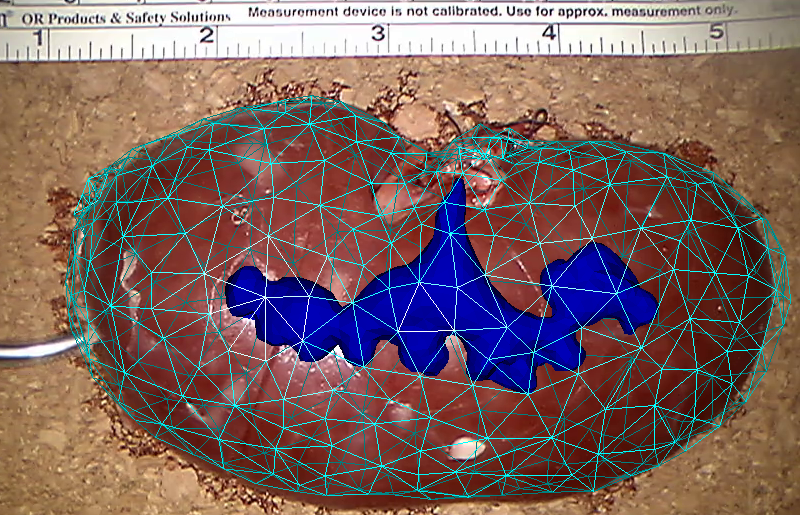Section: New Results
Detecting topological changes during non-rigid registration
Participants : Christoph Paulus, David Cazier, Stéphane Cotin.
Augmented reality has shown significant promise in overcoming certain visualization and interaction challenges in various domains such as medicine, construction, advertising, manufacturing, and gaming. Despite the promise of augmented reality and its successful application to many domains, significant research challenges remain. Among these challenges is the augmentation of non-rigid structures that can undergo topological changes, such as fracture, tearing or cutting. This is for instance the case in minimally invasive surgery, which has gained popularity and became a well-established procedure thanks to its benefits for the patient, in particular with shortened recovery times.
|
Current methods dealing with non-rigid augmented reality only provide an augmented view when the topology of the tracked object is not modified, which is an important limitation. We solve this shortcoming by introducing a method for physics-based non-rigid augmented reality [11]. Singularities caused by topological changes are detected by analyzing the displacement field of the underlying deformable model. These topological changes are then applied to the physics-based model to approximate the real cut. All these steps, from deformation to cutting simulation, are performed in real-time. This significantly improves the coherence between the actual view and the model, and provides added value.





